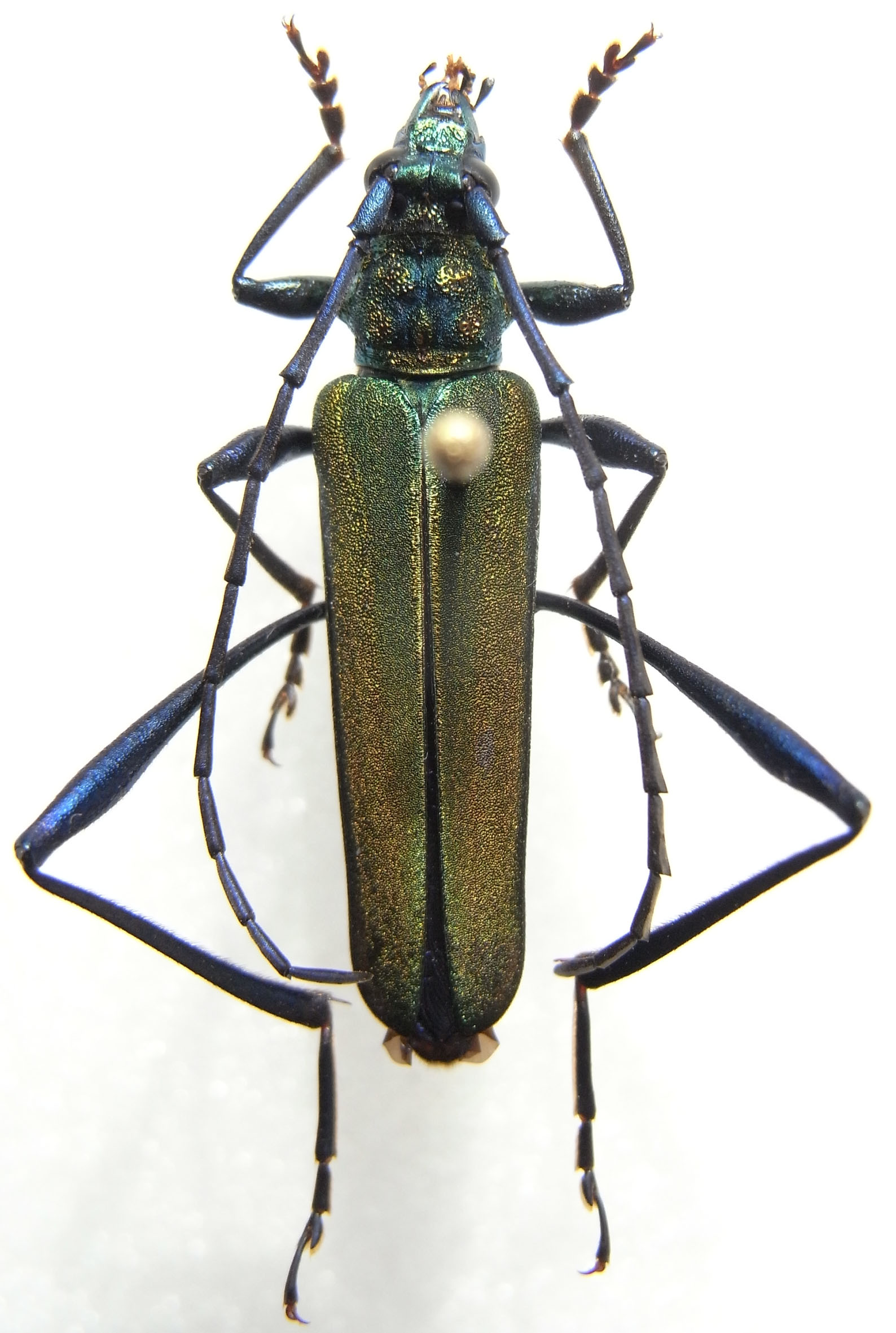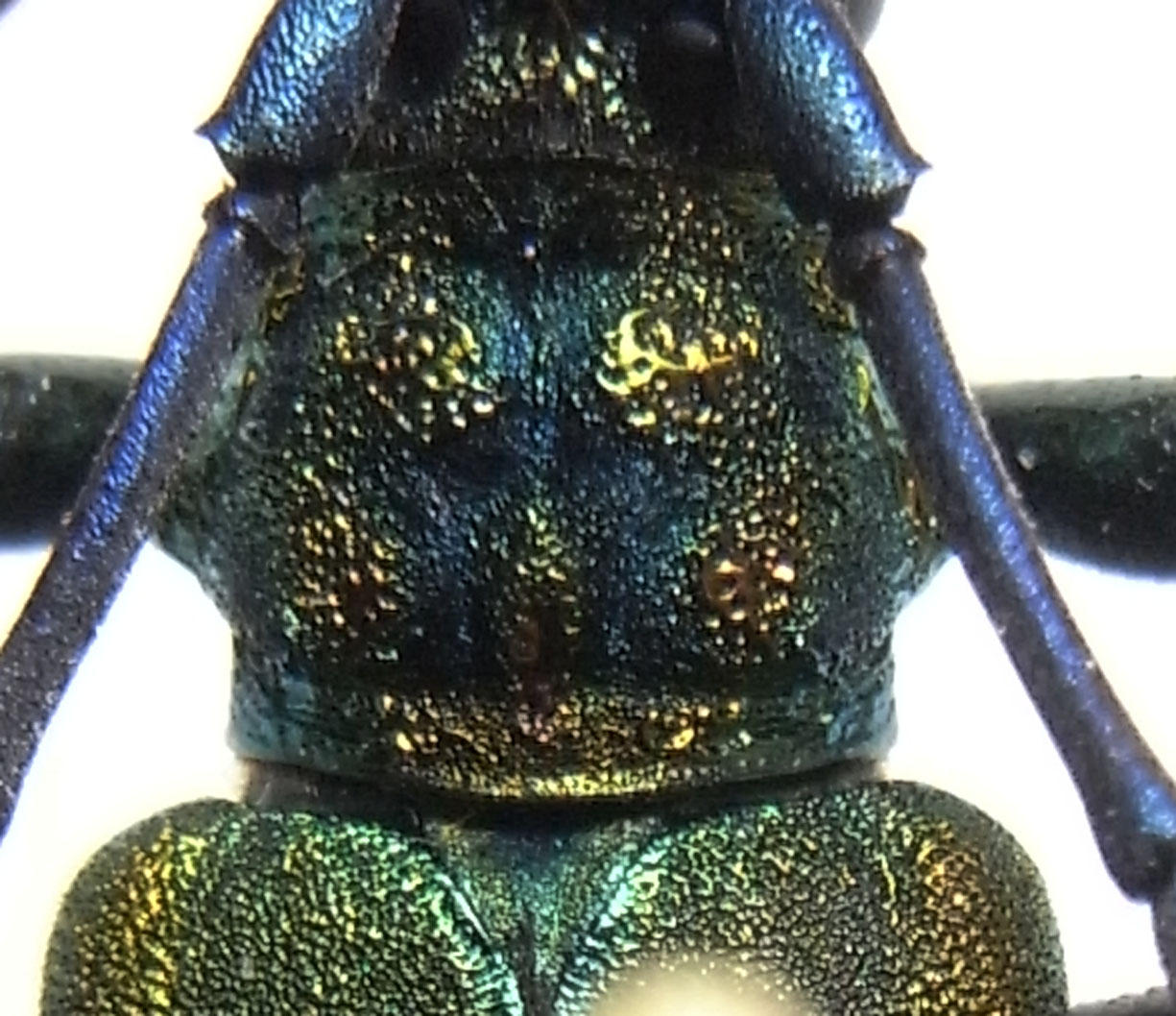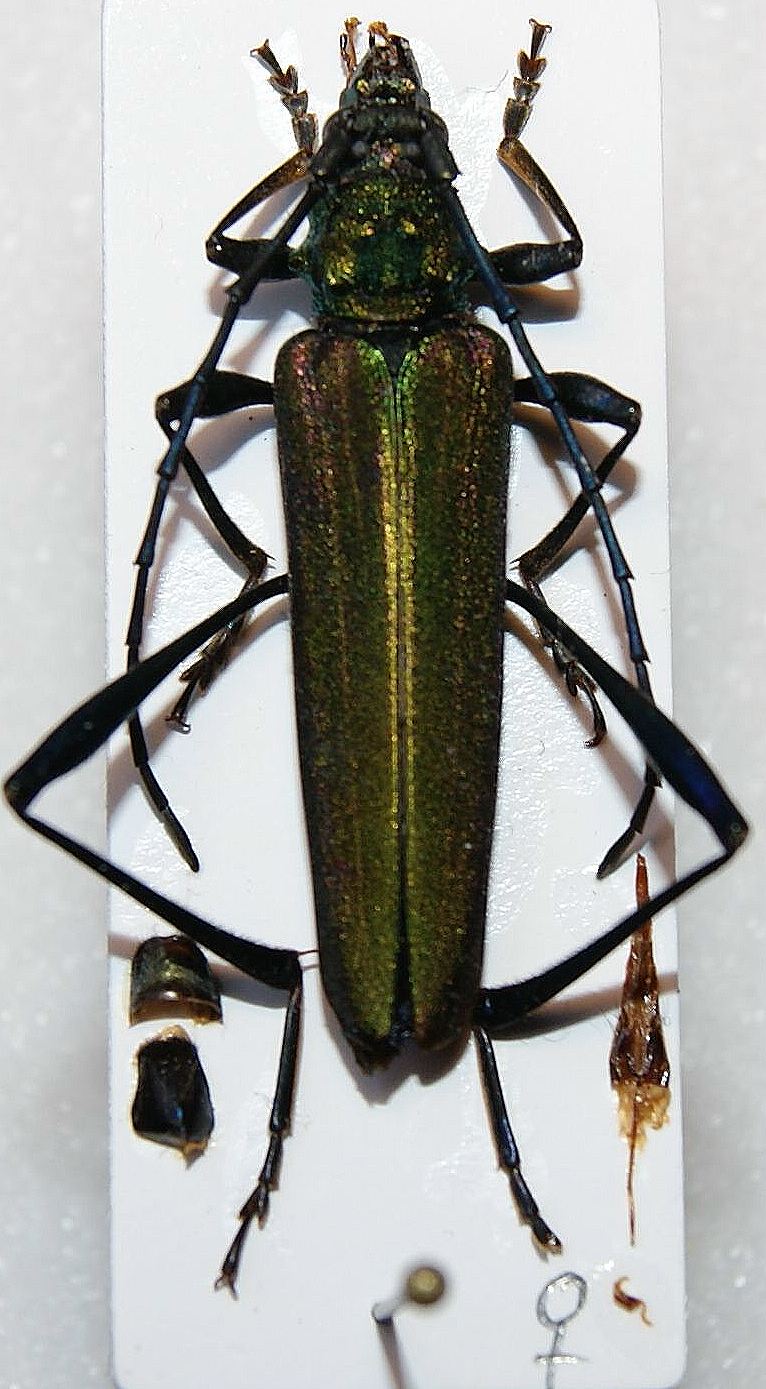| T O P I C R E V I E W |
| Xavier |
Posted - 24/03/2013 : 12:53:38
 
19 mm à 23 mm.
Hua Phan, nord-est Laos.
5 reliefs dorés sur le thorax, séparés par un Y bleu inversé ; tout avis sur ce Chloridolum (?) est le bienvenu  |
| 15 L A T E S T R E P L I E S (Newest First) |
| Xavier |
Posted - 03/08/2021 : 17:25:30
Good job !  |
| Francesco |
Posted - 03/08/2021 : 16:37:29
This species was described as Aphrodisium holzschuhi Skale & Vitali, 2021.
The shown specimens are paratypes and the paper is available here. |
| Francesco |
Posted - 04/01/2021 : 16:55:56
I have got a specimen like that.
Some news? |
| Xavier |
Posted - 31/03/2013 : 20:47:49
Yes Andre, no problem  |
| Andre |
Posted - 31/03/2013 : 20:12:38
Chelidonium, Aphrodisium or???......but this is not violaceimembris!
|
| Xavier |
Posted - 29/03/2013 : 18:30:20
Well, it's not a Chelidonium !! I've made a big mistake  : :
Chelidonium genus is supposed to have " antennal scape subrounded apically " (Gressitt, 1970, key of Callicromatini, page 136, Fauna of Laos). My species has got a tooth... |
| Andre |
Posted - 29/03/2013 : 16:43:42
Chelidonium is probably OK, but this is not C. violaceimembris G. & R. |
| Xavier |
Posted - 29/03/2013 : 07:54:49
I am agree with you for the genus.
With Gressitt's key (1970), I find Chelidonium violaceimembris Gressitt & Rondon, 1970 |
| Francesco |
Posted - 24/03/2013 : 21:28:10
According to me, it should belong to Chelidonium. |
| Xavier |
Posted - 24/03/2013 : 20:52:36
Thank you Andre. This species should be easy to determine with such pronotum ... I search in Gressitt's books. |
| Andre |
Posted - 24/03/2013 : 20:19:32

163.78 KB
Here a female. |
| Xavier |
Posted - 24/03/2013 : 19:52:06
I haven't extracted genitalia, and my 3 specimens have antennas of the same length.
So I don't know  |
| Francesco |
Posted - 24/03/2013 : 19:37:28
First thing: is it male or female? |
| Xavier |
Posted - 24/03/2013 : 16:10:04
 Thanks Andre ! Thanks Andre !
...I think I will let alive such species during my next trip in south-east Asia. |
| Andre |
Posted - 24/03/2013 : 15:39:23
Diese Art ist ein gutes Beispiel für das Chaos innerhalb der Callichromini.
Die Determination scheitert schon am Erkennen der Gattung! Wegen des gezahnten Scapus und der relativ kurzen Schenkel (wie immer man dieses unsinnige Merkmal bei einem präparierten Ex. exakt erkennen soll) lande ich in dem wohl aktuellsten Schlüssel von Bentanach 2012/ (Rev. Polyzonus) bei Laosaphrodisium gen. nov. (Was natürlich Unsinn ist) Diese Gattung ist im Schlüssel durch kürzere Schenkel und gezahntem Scapus charakterisiert. Vor allem die kürzeren Schenkel sind in Abb. 218/ S. 83 sehr deutlich! Sind diese nun länger oder kürzer???
Also deuten wir "subrounded" als "ein wenig spitz" und landen auf Pos. 4. Dort wird wieder nach den Schenkeln gefragt und schon ist man auch an Chelidonium vorbei. Was bleibt jetzt noch? Und was ist Schwarzerium und Aphrodisium?
Ich durfte ca. 30 Ex. dieser Art (17-27 mm) studieren. Habe Tiere aus Laos, Myanmar und Yunnan und führe sie vorerst unter Chelidonium.
Auffällig sind die sehr kurzen Fühler der Weibchen. |


